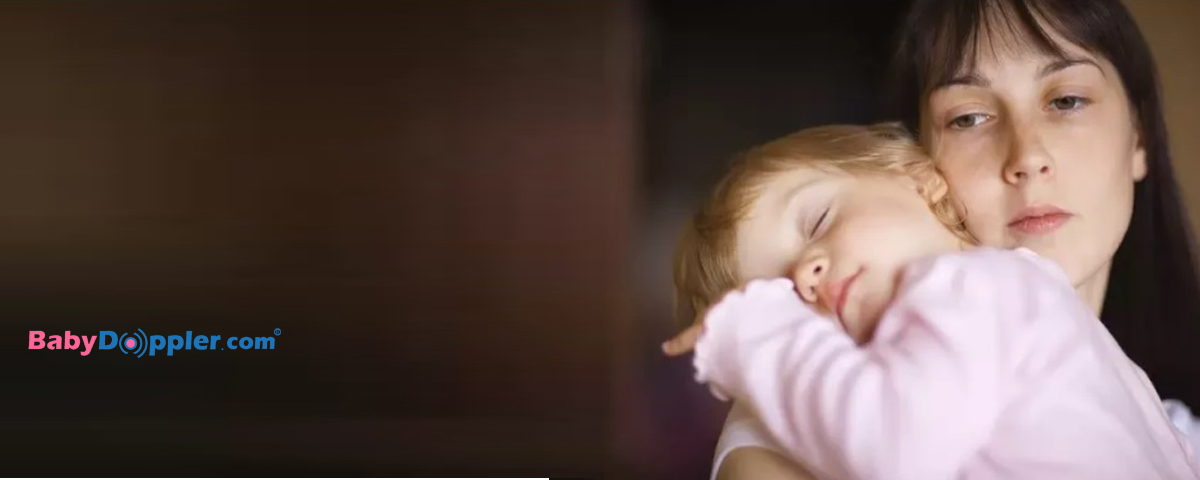If you’ve ever had a yeast infection, you know how uncomfortable and frustrating they can be. Unfortunately, they’re common during pregnancy thanks to your changing hormone levels.
Although it’s one of the more annoying pregnancy symptoms, yeast infection treatment during pregnancy can be easy using over-the-counter medications. However, not all are safe.
We know that when you have a yeast infection, you want to get rid of it ASAP instead of spending time researching about treatments. That’s why we’ve compiled everything you need to know in this guide—from why a yeast infection happens to how to get rid of it.
What is a Yeast Infection?
A vaginal yeast infection (AKA vaginal candidiasis or vaginal thrush) is a fungal infection that can affect any woman, pregnant or not. Although they can be irritating, yeast infections are treatable and aren’t usually serious. When the acid and yeast levels in your vagina are unbalanced, yeast can overgrow and you can develop a yeast infection.
If you suspect you have a yeast infection, you should go to your doctor to make sure you haven’t mistaken it for something different, such as bacterial vaginosis or an STI (sexually transmitted infection).
Many drugstores also sell test kits that may help determine if you have a yeast infection. These kits usually require you to insert a swab or strip inside your vagina to test the pH level. A few seconds after taking it out, the color the swab has turned will indicate if there’s any abnormalities in your pH level. Some kits indicate that pH levels within certain ranges mean you may have a yeast infection or bacterial infection. These can be helpful in determining if your pH level is unbalanced. However, they’re not substitutes for a doctor’s diagnosis. Since the instructions may not be followed and the swab/strip may get contaminated, the results aren’t always accurate. In addition, some kits may be more accurate than others.
Signs of a Yeast Infection
If you have these symptoms, you may have a yeast infection:
- Itching in the vagina or around the vulva
- Vaginal irritation or soreness
- Swelling or redness around vaginal area
- White & thick discharge (usually odor-free, sometimes with a cottage-cheese-like consistency)
- Watery discharge or more discharge than usual
- Burning during sex or urination
Sometimes yeast infections are confused with bacterial vaginosis (BV). The symptoms of this infection include:
- Grey or whitish discharge
- Fishy odor
- Vaginal itching
- Burning during sex or urination
- (However, some women have no signs)
Unlike yeast infections, some studies have shown that BV may be linked to low birth weight, miscarriage and premature water breakage, according to the American Pregnancy Association. That’s why it’s important to check with your doctor to make sure you have a yeast infection and not BV. Thankfully, BV is usually also easy to treat.
Yeast Infections and Pregnancy
Simply put, you may be more likely to get a yeast infection during pregnancy because your hormones are changing. Your vaginal discharge may contain more sugar that yeast feed off of, causing an overgrowth. Yeast infections may also be caused by:
- Antibiotics or steroids
- Intercourse
- High blood sugar
- Douching
- Spreading of bacteria in anal area to vaginal area (wiping, diarrhea, sweat)
Can a yeast infection be an early sign of pregnancy?
Some people wonder if getting a yeast infection could mean they’re pregnant. While it could be a pregnancy sign, yeast infections can also be the result of changing hormones before your period. If you have never had a yeast infection and get one while you’re trying to conceive, it could be more likely that it’s caused by pregnancy hormones. However, the only way to know is to take a pregnancy test.
How to Prevent Yeast Infections During Pregnancy
To prevent an infection from occurring, you should know that the area is sensitive and that several things can alter your pH level. The best advice is to be mindful of the products you use near your vagina and to keep it as dry as possible throughout the day.
Even if you already have a yeast infection, following these tips is important to stop it from reoccurring.
Here are some ways to help prevent a yeast infection:
- Wear loose clothing and cotton underwear. To let that area breathe, avoid tight pants and nylon panties or thongs. If you already have a yeast infection, to avoid further irritation, consider wearing skirts and dresses or loose pajama pants without underwear.
- Use unscented soap. Fragrances, including bubble bath and scented bath salts, can change the pH level of your vagina. Some people may also be sensitive to fragrant laundry detergents. To be safest, you may wish to leave that area soap-free and simply wash with water instead.
- Avoid scented pads and tampons. Some feminine products contain deodorant, which can irritate the area.
- Always dry your vaginal area. After showering or swimming, thoroughly dry your vaginal area. If you want to be extra careful, use a blow dryer on a low, cool setting.
- Change out of wet clothes immediately. This includes swimsuits, workout clothes, etc.
- Wipe front to back. This can minimize the amount of bacteria spread from the anal to vaginal region.
- Don’t douche. Douching can change your pH level.
- Eat yogurt with “lactobacillus acidophilus” in it. This is good bacteria that can help fight off yeast infections.
- Limit sugar. Try to get your sugar from natural sources, such as fruit, rather than baked goods, candy or other processed foods. Since yeast feeds on sugar, too much can lead to an infection.
- Take probiotics. Probiotics can help increase your good bacteria and help you maintain a healthy pH level.
Best Medication for Yeast Infections During Pregnancy
Yeast infections can usually be treated with over-the-counter products, but not all are recommended during pregnancy. You should also note that it can take longer for a yeast infection to clear during pregnancy (up to 7 days).
There are different types of yeast infection treatments, such as creams, suppositories and oral medication.
- Creams— External creams can be used to help soothe the area and minimize itching.
- Vaginal suppositories— Suppositories are capsule-like products that are inserted into the vagina, usually before bed. Overnight, the capsule will dissolve and a medicated cream will fill the vagina. The next day you’ll want to wear a pantyliner to catch any medication that is discharged.
- Oral medication— When you’re at the drugstore looking for yeast infection treatments, you’ll probably come across an oral medication called fluconazole (Diflucan). However, doctors usually recommend against taking it during pregnancy, especially in the first trimester. If you want to try an oral yeast infection medication, ask your doctor to weigh the benefits and risks.
These medications are generally the safest and best options during pregnancy:
- Clotrimazole (Canesten, Mycelex, Lotrimin AF)
- Miconazole (Monistat)
- Terconazole (Terazol)
- Butoconazole (Gynazole-1)
Ask your doctor or pharmacist which treatment they recommend during pregnancy and always read and follow the label. If you have an immediate question about a medication, call MotherToBaby at 1-866-626-6847 or MotherRisk at 1-877-439-2744.
Yeast Infection Treatment During Pregnancy: Home Remedies
There are a variety of home remedies you can try to soothe symptoms or treat a yeast infection. However, you should still ask your doctor which treatments are right for you. For example, homemade boric acid suppositories are effective for many women; however, some experts recommend against it during pregnancy unless directed by a physician. Just because a treatment is natural doesn’t mean it’s safe for you.
People have reported relief with the following remedies:
- Eating garlic or taking garlic capsules
- Using garlic vaginal suppositories
- Eating plain, no-sugar-added yogurt with “lactobacillus acidophilus” can increase good bacteria to fight off yeast
- Topically or internally applying plain, no-sugar added yogurt with “lactobacillus acidophilus” for itching relief
- Topically applying tea tree oil diluted with water to soothe itching (tea tree oil is strong, so be careful!)
When to See a Doctor
If you’ve never had a yeast infection before or are unsure of your symptoms, it’s best to see a doctor who can confirm what type of infection it is.
If you’ve treated your yeast infection but it reoccurs or doesn’t go away, talk to your doctor. He or she can help you determine the cause and the proper course of treatment. Most doctors will first recommend an over-the-counter medication. Since longer treatments tend to be more effective, doctors usually recommend using over-the-counter treatments for 7 days. If that doesn’t work, he or she may prescribe or recommend oral fluconazole. However, it may be associated with malformations at higher doses, so your doctor will need to weigh the benefits and risks.
If you’ve had a pregnancy yeast infection, what treatments have you found effective? Let us know below. If you have any friends, be sure to share this post to help them, too.
P.S. Do you have a fetal doppler? These amazing handheld devices allow you to listen to your baby’s heartbeat while she’s still inside the womb. It creates rich bonding experiences between the family and can help reassure you that she’s okay. Check out our fetal heartbeat monitors today!
References:
http://americanpregnancy.org/pregnancy-complications/yeast-infections-during-pregnancy/
https://www.mayoclinic.org/diseases-conditions/bacterial-vaginosis/symptoms-causes/syc-20352279
http://americanpregnancy.org/pregnancy-complications/bacterial-vaginosis-during-pregnancy/
https://www.healthlinkbc.ca/health-topics/hw79515
https://www.healthline.com/health/garlic-for-yeast-infection#treatment
http://www.motherisk.org/prof/updatesDetail.jsp?content_id=900
http://www.seventhmoonhomebirth.com/PDFs/Yeast-Infection-Remedies.pdf



